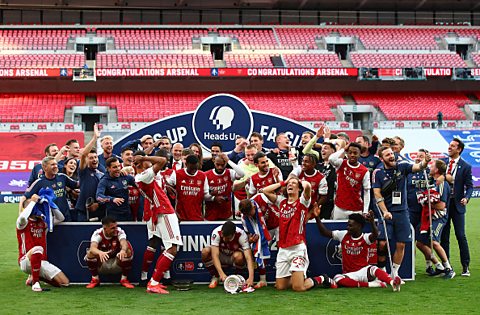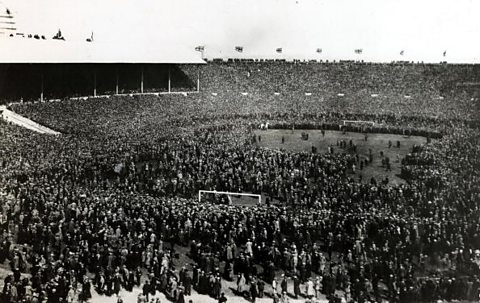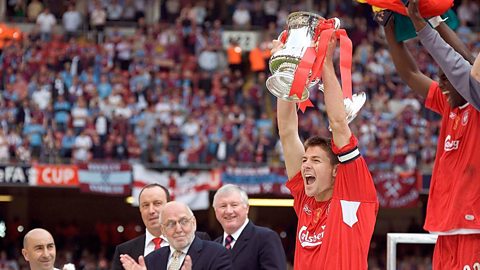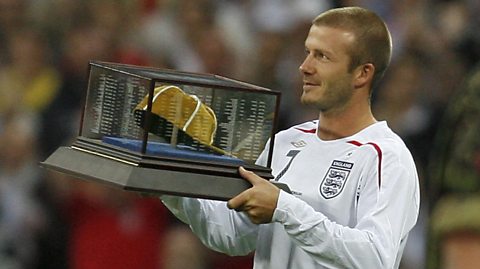ItÔÇÖs the oldest national football competition in the world.
The FA Cup has provided some of English footballÔÇÖs most iconic moments since 1871 - incredible goals, fantastic celebrations and even a dropped trophy in 2020 ÔÇô with a new chapter in its history to be written in 2023.

Six-time winners Man City will take on Manchester United, who will collect their 13th victory if they head back to Old Trafford with the trophy at the end of the match.
Ahead of the 142nd final, ┤¾¤¾┤½├¢ Bitesize looks back at some of the more unusual and memorable moments in FA Cup final history.
Bye to the final
The many rounds of the FA Cup leading to the showpiece final are often referred to as the Road to Wembley.
But back in the second ever FA Cup season, one team skipped all of that.
The tournamentÔÇÖs full name is the Football Association Challenge Cup ÔÇô and itÔÇÖs the ÔÇÿchallengeÔÇÖ part thatÔÇÖs particularly important here. The FA intended for the holders of the competition to be challenged by another side, who had progressed through the rounds, in the final.
So, in the 1872-73 season, Wanderers, the inaugural winners of the cup, were given a bye to the final (meaning they qualified for that game without needing to play any other matches).
They took on Oxford University, who had progressed through four rounds to get to the final and won 2-0 to retain the cup. The FA then scrapped the bye system for the following season, employing a straight knockout tournament, meaning Wanderers were the only team in the cupÔÇÖs history to be automatically given a spot in the final.
Non-league champions
The idea of a team from outside EnglandÔÇÖs football league system winning the FA Cup is pure fantasy stuff these days.
Only 10 non-league teams (teams from outside the Premier League and Football League) have reached the last 16 of the competition in the post-war era, with just one ÔÇô Lincoln City ÔÇô getting to the quarter-final stage in 2017.
But a non-league team has lifted the trophy once ÔÇô all the way back in 1901.
Division One side Sheffield United took on Tottenham Hotspur, of the Southern League, in the final. As its name suggests, the Southern League featured teams from the south of England and was set up to rival the Football League which was dominated by teams from the North and the Midlands. As the Southern League was outside of the Football League itself, it was considered to be a non-league competition.
After a 2-2 draw at Crystal Palace, Spurs went on to win the trophy in the replay, beating the Blades 3-1 at Burnden Park in Bolton.
The White Horse
The 1923 FA Cup final was the first-ever game of football to be played at Wembley Stadium, which had a capacity of 125,000.
Bolton Wanderers were facing West Ham United, and football fans from all across London headed to the ground for the game. The stadium quickly began to fill up, so the turnstiles were closed around an hour before kick-off. The huge crowd outside, though, rushed to the barriers and forced its way in, with estimates putting the crowd between 150,000 and 300,000 people.
Thousands were forced to climb fences and made their way onto the pitch. Mounted policemen were brought in to try to clear the crowds.

PC George Storey, who was off-duty on the day, was mounted on a horse named Billie. The grey horse, often described as white because of the high contrast on the newsreel pictures, was seen in the midst of a huge number of supporters in one of the competitionÔÇÖs most defining images.
Storey, Billie and the other mounted policemen helped move the crowd to the touchlines so the game could take place, albeit 45 minutes late. Bolton won 2-0, but it was the so-called White Horse that won the nationÔÇÖs hearts.
'IÔÇÖll eat my hat'
Whether itÔÇÖs Guy Mowbray, Vicki Sparks or Conor McNamara, every single commentator has suffered the commentatorÔÇÖs curse.
Within seconds of saying something would or wouldnÔÇÖt happen, the opposite takes place almost immediately.
Usually, it has no real consequences, but in the 1938 final, commentator Thomas Woodroofe put his foot in it.
The game between Preston North End and Huddersfield Town was the first-ever FA Cup final to be televised and the ┤¾¤¾┤½├¢ÔÇÖs Woodroofe was unimpressed with the action after a drab goalless 90 minutes, followed by a further lack of goals in the opening 29 minutes of extra time.
With just a minute to play before a replay, Woodroofe said: ÔÇ£If thereÔÇÖs a goal scored now, IÔÇÖll eat my hat.ÔÇØ
Seconds later, the curse struck. Preston were awarded a penalty, which they scored to win the cup. True to his word, Woodroofe did subsequently eat a hat, albeit one made out of cake and marzipan.
Raise the roof
As a competition thatÔÇÖs been played for over 150 years, the FA Cup has seen plenty of firsts.
The 1933 final was the first in which players wore numbers, with the winning Everton side sporting 1-11, while Manchester City donned 12-22.
Kevin Moran became the first player to be sent off in an FA Cup final, seeing red in 1985 for Manchester United, who overcame the disadvantage to beat Everton 1-0.
In 1988, WimbledonÔÇÖs Dave Beasant became the first goalkeeper to both save a penalty in an FA Cup final and to captain a winning team.
But in 2003, the final became the first FA Cup game to be played indoors.
With Wembley Stadium under reconstruction, the final had temporarily moved to CardiffÔÇÖs Millennium Stadium from 2001 onwards. Due to unseasonably poor weather for the May final between Arsenal and Southampton, officials decided to close the stadium roof.
The protection from the elements worked in the GunnersÔÇÖ favour ÔÇô they beat the Saints 2-0.
This article was last updated in April 2023.

History of the FA Cup trophy
There's been five versions of the most famous prize in football - and counting.

The origins of football jargon
Read this to learn about even more sporting lingo.

ÔÇÿI helped design the ball that won France the World CupÔÇÖ
How Sam went from streetwear to sports design.
